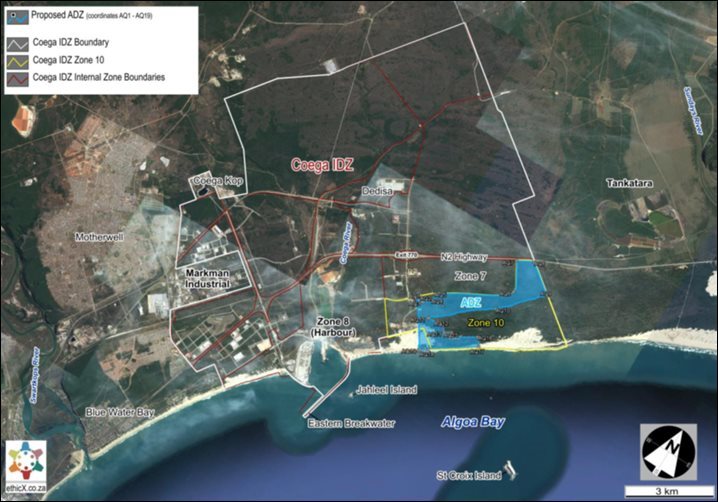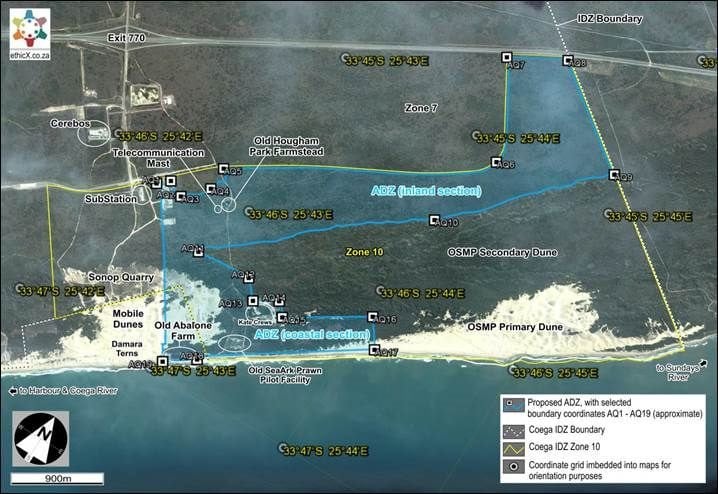
Subscribe & Follow
#AfricaMonth
Jobs
- Cashbook Accountant Cape Town
- Nursery Production Manager George
In the news
Creating an investment-ready platform for infrastructure projects in the emerging aquaculture sector

According to Heller (2017), land-based aquaculture is expected to see continued growth to meet the increased market demand as the global demand for seafood continues to grow. It is predicted that by 2050, the production and volumes from aquaculture, particularly around Asia, will double and be the main supply of aquatic dietary protein globally (Stentiford et al., 2020).
Besides having a smaller spatial footprint when compared with both land-based agriculture and capture fisheries, aquaculture offers many positive attributes including poverty alleviation in socio-economically disadvantaged regions, increased production due to technological advances and comparatively lower environmental impacts (Stentiford et al., 2020). Notwithstanding the enormous potential that it holds for the economy of South Africa, the local aquaculture sector is underperforming and continues to contribute very little to national fishery products and the country's gross domestic product (GDP) (FAO, 2022).
According to Little et al. (2016), aquaculture has expanded faster than any other livestock sector in recent decades, growing at an annual rate of 7.5% between 1990 and 2009, thereby outperforming the global growth achieved by the poultry (<5 %) and pig (<2.5%) sectors. There has, however, been a decline in the global growth rate of aquaculture since the beginning of the century (FAO, 2020), with public opposition, restricted land space for aquaculture farms, licensing backlogs, market issues and diseases being cited as some of the reasons for the declining growth rate of the sector.
To unlock the aquaculture sector in the Nelson Mandela Bay Municipal (NMBM) region, the Coega Development Corporation (CDC), as operator of the leading Special Economic Zone (SEZ) in Africa, decided to develop a 440-hectare (ha) land-based aquaculture development zone (ADZ) in the Coega SEZ to accommodate both freshwater and marine aquaculture. The overall purpose of the development is to create an investment-ready platform for planned commercial aquaculture operations to establish within the Coega SEZ, thereby facilitating entrance into and boosting growth of the sector in the region.
Problem identification
Through stakeholder engagement and desktop research, the CDC identified some of the major constraints stifling the growth of the sector in the NMBM region and set out to address some of these through public sector interventions. It should be noted that the identified constraints listed below are by no means exhaustive and merely serve to highlight constraints from an infrastructural and environmental perspective that the CDC seeks to address through the development of the Coega ADZ.
The identified constraints include:
• Access to land adjacent to the ocean: Land adjacent to the ocean in South Africa is costly to acquire and largely protected by environmental legislation.
• Logistics linkages to local and international markets: It is crucial to have good road networks to transport products to local markets. Being situated close to an airport or seaport for exports is vitally important.
• Availability of bulk infrastructure: Delivering bulk infrastructural services to properties adjacent to the ocean is usually very costly, especially in rural areas. Therefore, the financing of bulk infrastructure as part of the project's development cost would, more often than not, render the project non-viable.
• Environmental approvals: Cumbersome and costly environmental approvals have been a major stumbling block, especially for SMMEs seeking to enter the aquaculture sector.
Coega ADZ
Over the past decade, the CDC has set out to develop one of the largest land-based ADZs on a single geographical footprint in South Africa. The 440-ha ADZ is a greenfield development located inside the Coega SEZ adjacent to the deepwater Port of Ngqura (Figure 1). Being situated adjacent to the Indian Ocean with approximately 12km of coastline forming part of the boundary of the 9003-ha SEZ, it was inevitable that the CDC would pursue aquaculture as one of its targeted sectors for development.


Addressing identified constraints
Access to land adjacent to the ocean
Following years of planning and assessment, the CDC identified Zone 10 of the Coega SEZ to develop a land-based ADZ (Figure 1). To provide context for the ADZ and the selection of the site within the coastal cluster of development in Zone 10 of the SEZ, various project-specific, SEZ-wide, regional, and strategic environmental and planning processes were undertaken (Ethical Exchange, 2017).
In 2014, an independent concept design and feasibility study designated Zone 10 as a favourable location for aquaculture development, with marine aquaculture being earmarked for the low-lying areas (i.e., closer to the ocean) and freshwater aquaculture for the higher-lying inland area in the zone (Figure 2). In addition, the CDC conducted market research, interacted extensively with the aquaculture specialists and operators, visited various aquaculture operations, and engaged with a number of potential investors. As a result, in addition to marine aquaculture and following another feasibility assessment, the CDC decided to include intensive freshwater and brackish water aquaculture based on the feedback received and technological development to reduce water exchange and consumptive water use.
Logistics linkages
The Coega SEZ is served by two ports, with a combined capacity of over two million Twenty-Foot Equivalent Units (TEUs) a year. The Coega ADZ is located adjacent to the Port of Ngqura that has 2100 reefer plug points crucial for cold chain maintenance. The ADZ is also located approximately 25km from the Port of Port Elizabeth with approximately 1000 reefer plug points. Both ports are served by the world's major shipping lines. The ADZ is directly linked to the N2 arterial highway, which connects the SEZ to the rest of the region. The SEZ is further connected with the rest of South Africa and neighbouring countries through a rail connection.
The Chief Dawid Stuurman International Airport (DSIA) is approximately 30km from the ADZ and provides connectivity for national and international passengers and freight. This is particularly important for investors seeking to transport cargo to global markets via air freight, e.g., exporting live abalone to China. A flight between DSIA and OR Tambo International Airport is an approximate duration of 1 hour and 40 minutes and is serviced by several airlines.
Enabling infrastructure
In August 2020, the CDC started construction on enabling infrastructure in Zone 10 of the SEZ to unlock approximately 100 ha (Phase 1) of the ADZ (Figure 3). The construction includes the development of road, electrical and stormwater infrastructure unlocking sites for both marine and freshwater aquaculture. This means that aquaculture investors can focus on developing their core business rather than raising capital for bulk infrastructure.

Environmental approvals
In March 2015, the NMBM Bioregional Plan (NMBMBP), which designates ecologically important areas as critical biodiversity areas (CBAs) and existing protected areas (PAs), was adopted by the Department of Economic Development, Environmental Affairs and Tourism (DEDEAT), and officially gazetted. The NMBMBP informs land-use planning, environmental assessments, and authorisations, and highlights how the Coega ADZ development should be accommodated in the environmentally sensitive coastal zone. This paved the way for the CDC to initiate an environmental impact assessment (EIA) for land-based aquaculture on the identified site in Zone 10.
In February 2018, the CDC received environmental authorisation (EA) to develop and operate the Coega land-based ADZ. This allows companies to farm close to 40 marine and freshwater species in the Coega ADZ without undertaking an additional independent EIA. Investors are however required to develop an environmental management plan (EMP) that speaks to the larger environmental management programme (EMPr) for the ADZ.
The CDC received EA to abstract and discharge seawater from and into the marine environment in September 2021. This was the final and most challenging hurdle the CDC needed to overcome from an environmental perspective, bearing in mind that the marine environment anterior to the SEZ is a marine protected area (MPA).
The CDC is currently engaging potential aquaculture investors seeking to develop their businesses in the Coega ADZ. We hope to break ground on the first aquaculture investment project in the 2022/23 financial year. This will be a significant milestone in the CDC's journey to create a world-class investment location for aquaculture investors that will contribute significantly to the economy of the NMBM and the larger Eastern Cape. The CDC has laid the foundation for the development of the aquaculture sector in the NMBM and will continue to engage relevant stakeholders to find solutions and ensure that various stumbling blocks hindering the growth of the sector are removed.
About Dr Keith Du Plessis
Dr Keith Du Plessis, Manager: Business Development, Coega.Related
Flash Gala surpasses one million cartons as South African apple exports gain ground 3 days Global shifts in focus as Nampo 2025 champions farm resilience 14 May 2025 China bans South African beef imports amid FMD outbreak 12 May 2025 South Africa's wine industry shines with 2025 vintage 8 May 2025 Entries open for inaugural South African Preserve Championships 6 May 2025 FAO: April food prices climb as cereals and meat costs rise 2 May 2025








